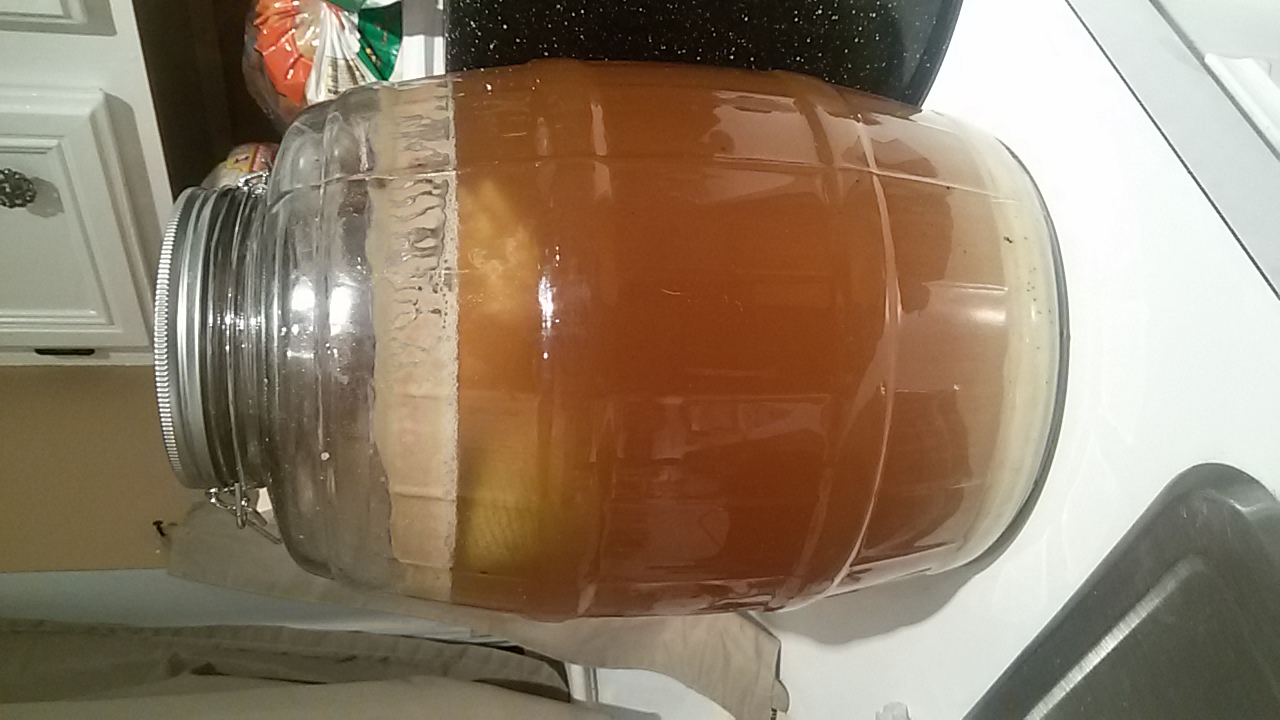- Joined
- Dec 26, 2013
- Messages
- 4,305
- Reaction score
- 5,139

I brew 3 - 3.5 gallon batches and have always used 6 gallon buckets for primary. If I do need to secondary, I have a couple 3 gal glass car boys. I was under the impression that 6 gallon was ok to ferment smaller batches because the CO2 from fermentation protects the beer from oxygen exposure inside the bucket. Is this not the case? My beer has never tasted oxidized using these bigger buckets.

I brew 3 - 3.5 gallon batches and have always used 6 gallon buckets for primary. If I do need to secondary, I have a couple 3 gal glass car boys. I was under the impression that 6 gallon was ok to ferment smaller batches because the CO2 from fermentation protects the beer from oxygen exposure inside the bucket. Is this not the case? My beer has never tasted oxidized using these bigger buckets.
I brew 3 - 3.5 gallon batches and have always used 6 gallon buckets for primary. If I do need to secondary, I have a couple 3 gal glass car boys. I was under the impression that 6 gallon was ok to ferment smaller batches because the CO2 from fermentation protects the beer from oxygen exposure inside the bucket. Is this not the case? My beer has never tasted oxidized using these bigger buckets.











No one ever seems to have a good answer about how quickly the CO2 in a bucket will be mixed with O2 from the atmosphere. Don't age long term in a bucket, but is it happening in weeks? Anyone know?
Obviously metal and glass are better options for keeping it from happening. But cost and availability compared to the benefit?


Anyone try these screw-top buckets from Uline? No idea if they are food-safe, but the airtightness makes it an intriguing possibility. Plus, not having to pry lids off--just unscrew.
I ferment in my brew kettle. You can get 20 qt stainless steel pots from Boscov's for $12 and they will last a long time.
People will tell you it's a bad idea because it's not completely sealed but it's bull. Don't listen to them. Saves space, time and it's self sanitizing.

Sorry if my pictures are messed up but this is what i use. 2.5 gallon pickle jars. On amazon. Heavy thick glass and they have wide opening and handles.
Care to elaborate?

I guess you could say I disagree with your advice, I think it's very important to reduce oxygen exposure to your beer. Attention to reducing potential sources of off flavors makes the difference between "good" beer and "world class" beer IMO. However it was mostly meant as a bit of a joke
That's a great idea! Did you punch a hole in the top to fit an airlock? Anyone think of any reasons the aluminum lid might cause any problems?
This would be great for mead making... start in a 3 gallon carboy and then after racking it would fit almost perfectly in one of these (Especially if you add fruit)
Yeah, knocked a hole in it. Worked for two batches so far. Alot of pickling fermenters out there
Do you have a problem with lid always smelling like pickles? I tried to use an empty pickle jar to store hops, but I could not get the smell out so I decided it wouldn't be good for storing hops. Maybe not a big deal for fermenting though?
I guess you could say I disagree with your advice, I think it's very important to reduce oxygen exposure to your beer. Attention to reducing potential sources of off flavors makes the difference between "good" beer and "world class" beer IMO. However it was mostly meant as a bit of a joke
I don't disagree that reducing oxygen exposure to beer is important. My position is that its not a big issue with the methods we employ to make beer and so it doesn't rank in the list of things I worry about. It is a non-issue, especially when compared to things like sanitation, temperature control and the like.
I guess the question is: To what extent does exposure to oxygen mean that oxidation can be tasted in the resulting beer?